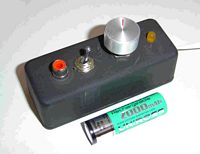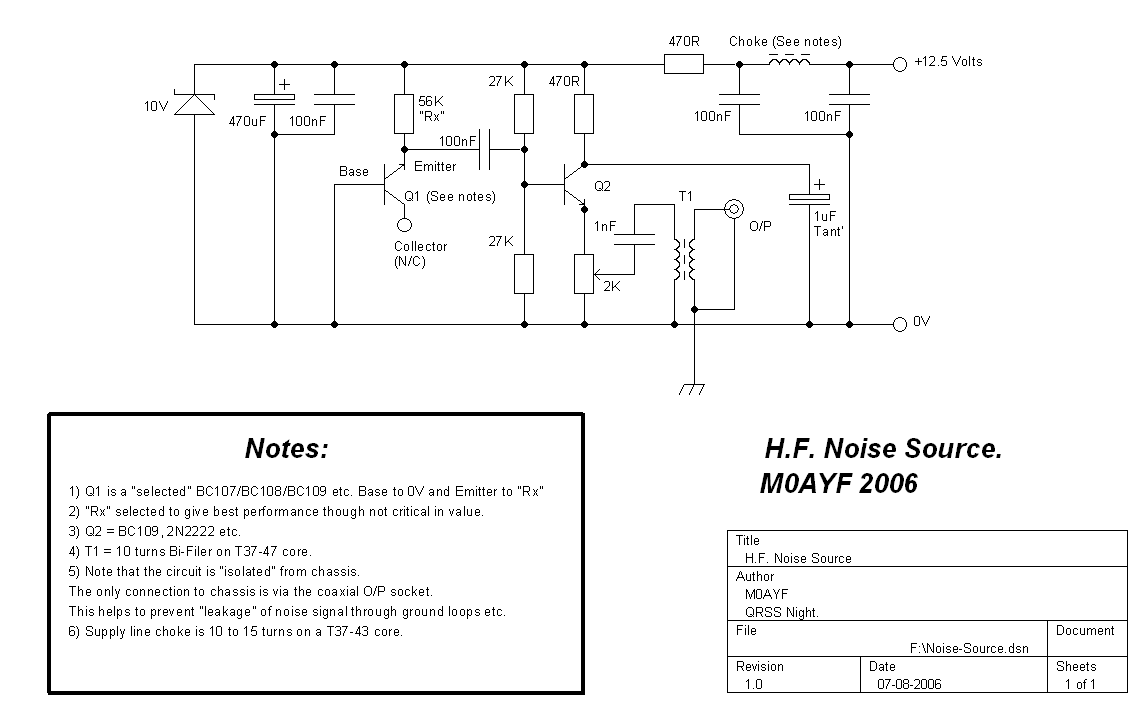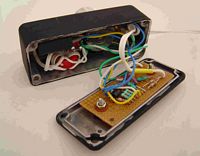
A useful R.F. noise source.
The R.F. noise source described here was based on a design which appeared in "Amateur Radio Techniques" 7th edition by Pat Hawker (G3VA). In the design presented here the noise element used in the original design (a zenor diode) has been replaced by a reverse biased base/emitter junction of a transistor. I found that modern zenor diodes are not nearly as noisy as the older devices from the 1960's which had been used in the original design. A "selected" BC107 transistor worked much better and gave higher O/P with more reliable operation. Click on the thumbnail below to see the full sized image.
Selecting a device for the "noise" element.
I found that some BC107's produced more noise than others, also the Voltage over which noise was reliably produced altered from device to device. The upper and lower Voltage limits over which noise is produced could be quite limited in some devices. I found it best to test a few samples and grade them in order of noise O/P and widest operating Voltage over which noise is produced. i.e. The upper/lower Voltage thresholds over which noise is produced should be as wide as possible for reliable operation. About 10 devices had to be tested in order to select 2 which performed well as noise sources. I only needed one device but selected two so I would have a spare in case of failure. Click on the image below to see the full sized schematic.
The schematic is fairly self explanatory but as an additional guide here is an internal view of the completed unit which is built on strip board and housed in a small di-cast box. Click on the thumbnail below to see the full sized image.
At the time of writing the unit has been in service for around two years and proved to be very useful around the shack for relative sensitivity checks, filter testing etc. Several improvements are possible and perhaps the unit would benefit from a calibrated attenuator at the O/P matched into 50 Ohms.

Well, that’s about it, thank you for reading this and please send any questions, comments or "heckles" etc to the e-mail address linked below.




